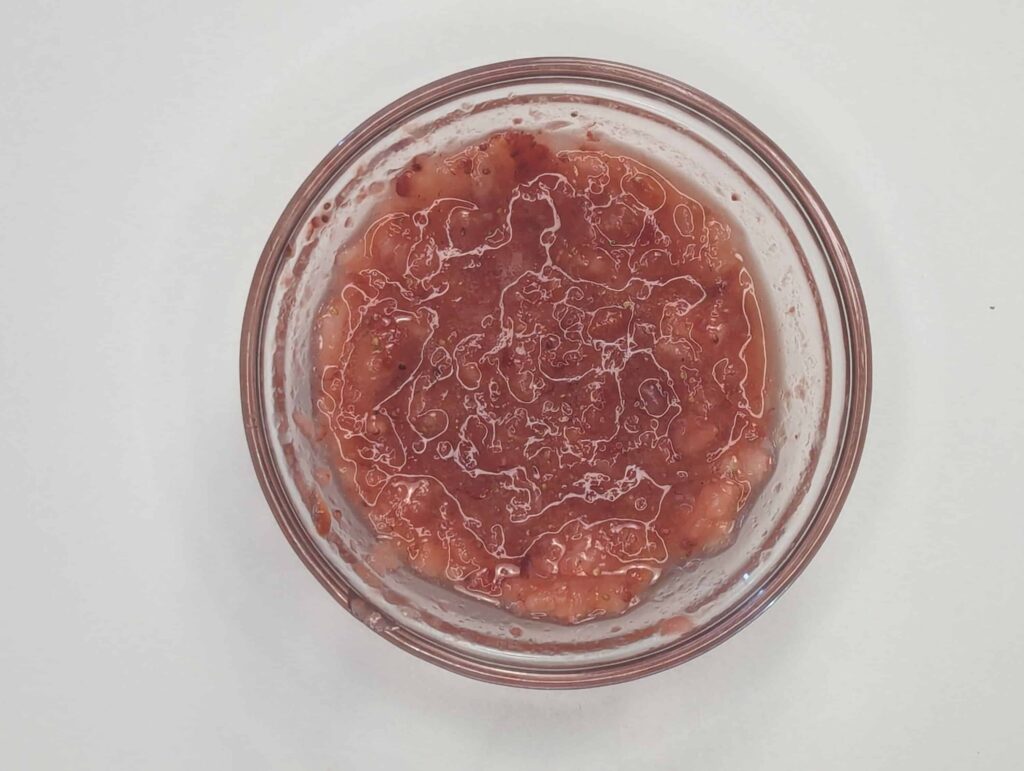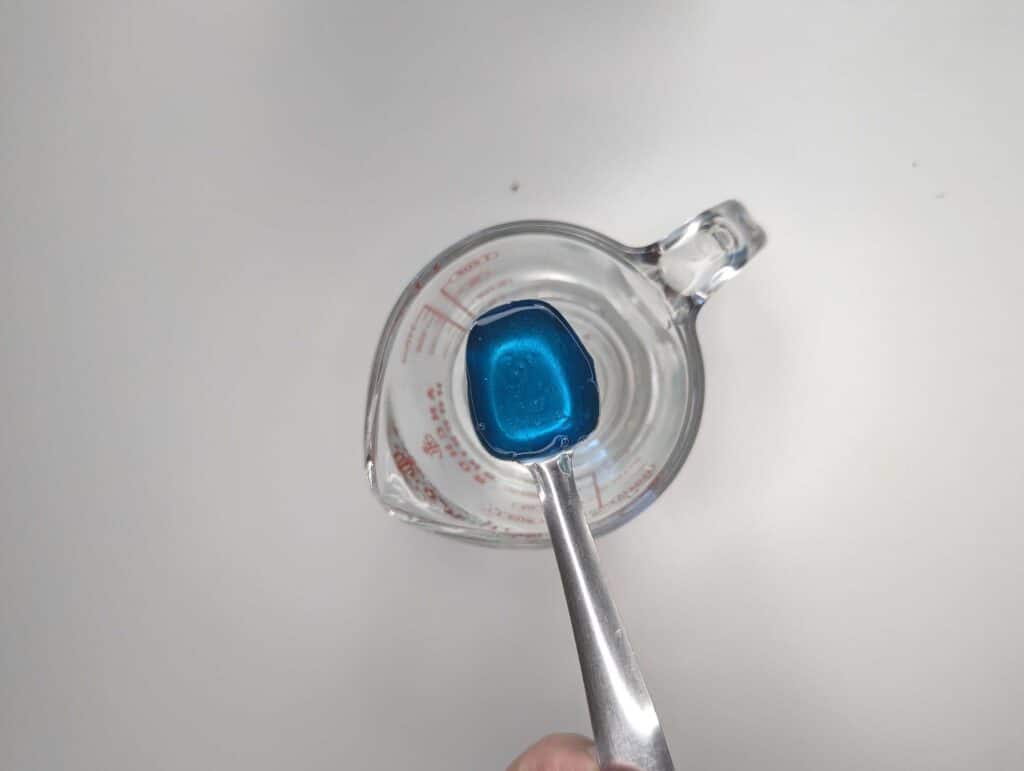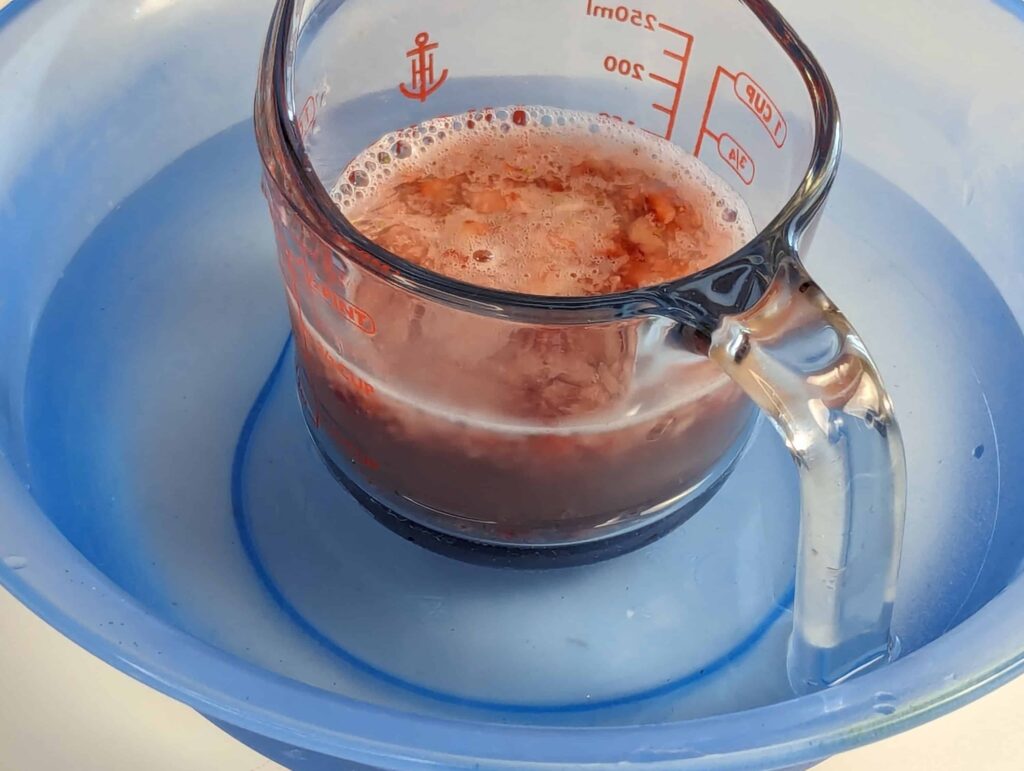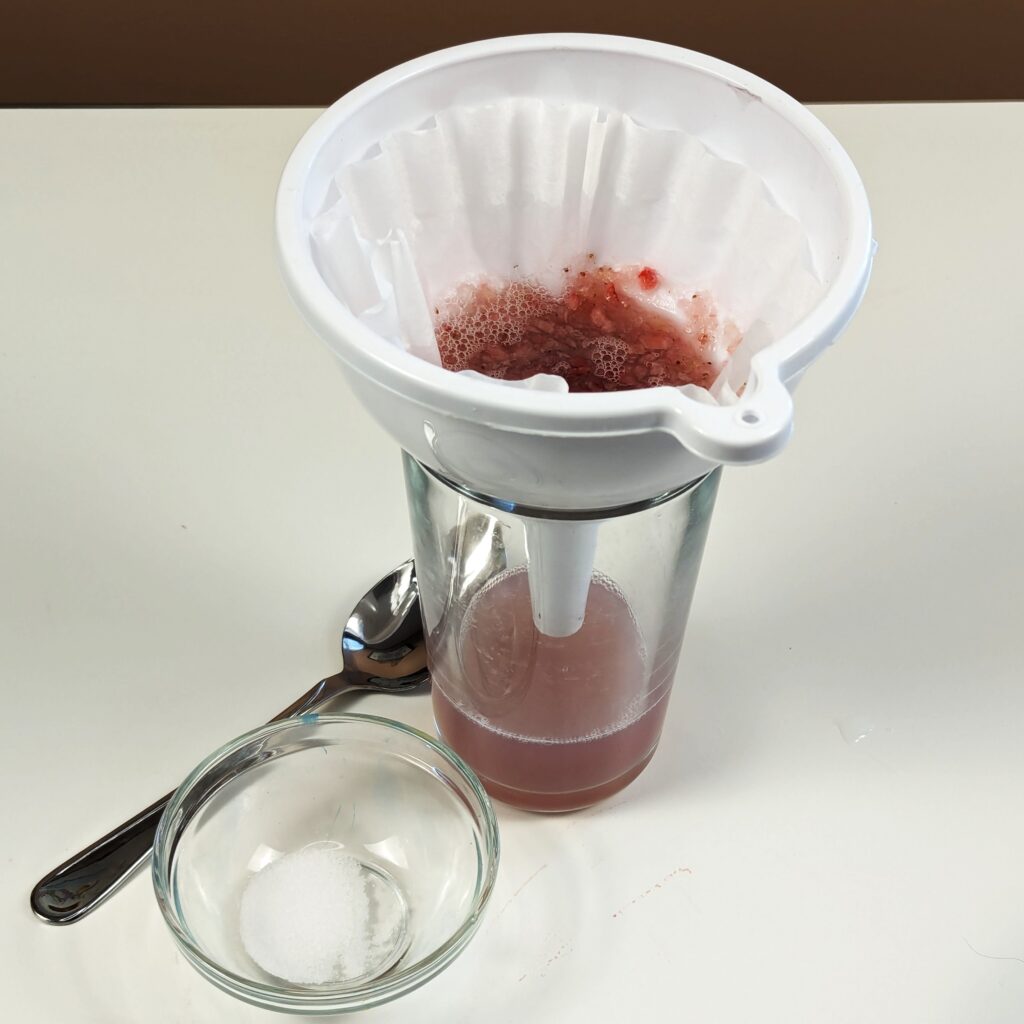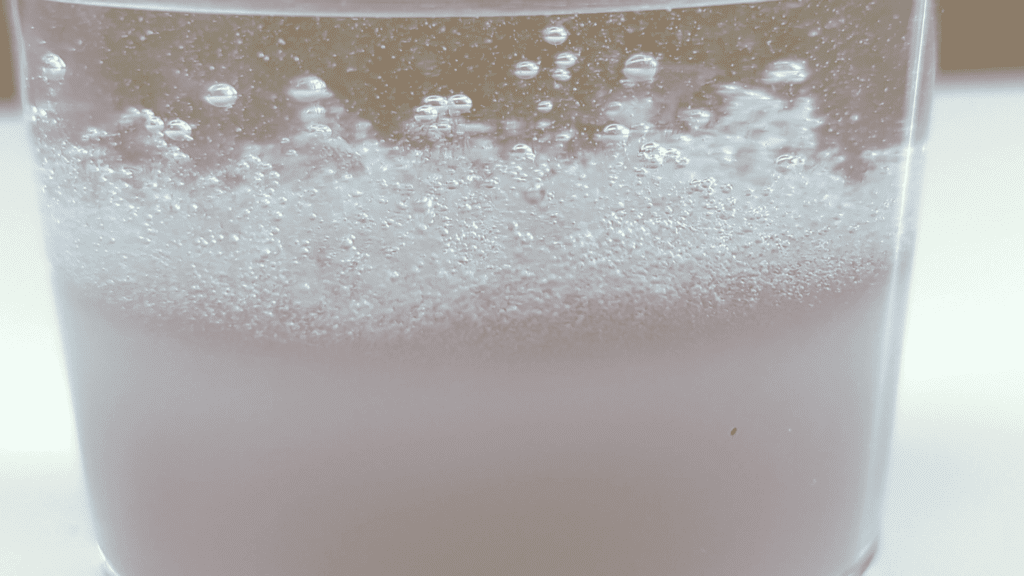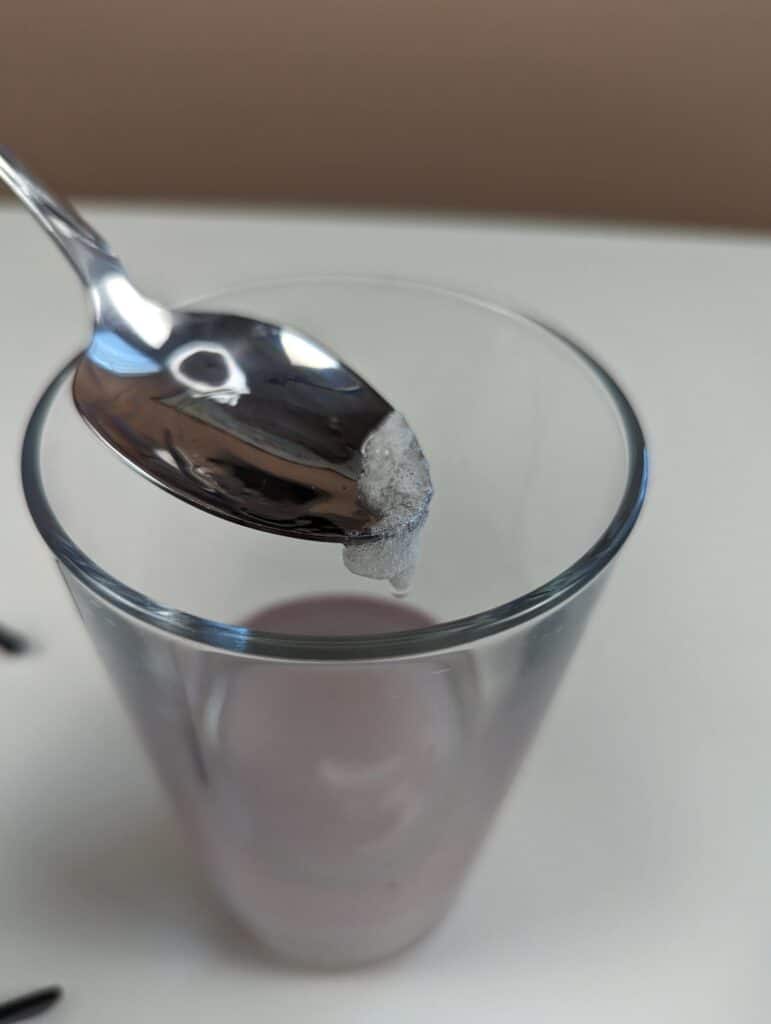Extracting DNA From Strawberries Experiment with Worksheets
Extracting DNA from strawberries, or anything, sounds like a complicated procedure performed by people in white lab coats in sterile environments using pipettes and special chemicals. And sure, it can be done that way. Or, you could do it in your kitchen.
I have to admit. Even though I was a biology major and worked as a biologist and researcher, not every area of science excites me. Genetics was such an area for so long.
One day in a college lab class, we extracted DNA from peas and collected enough to wind it around a glass rod.
I.was.amazed.
This opaque white stringy goo was DNA. No way!
Up until then, DNA was just punnet squares. linked traits, and ways to identify criminals on TV shows. But, NOW I could see it. That made all the difference.
Extracting DNA In Your Kitchen
DNA is the “blueprint” for all organisms. It can be found in the nucleus of the cell. To get to the DNA, the cell wall needs to be broken down and the DNA needs to be separated from the rest of the cell. Believe it or not, we can do this in the kitchen with household items.
I have done this experiment many times in labs and with my kids using both peas and strawberries. We usually do this at home with strawberries. because we always have them on hand.
Try this with your kids and I promise they will be amazed, too!
Download the FREE printable pack that goes with this activity. Includes background information, procedures, explanations, and activity pages about strawberries. This printable can be used with a wide range of grades, just use what is appropriate for your homeschool or classroom. Scroll down for the request box.
Supplies
Here’s what you’ll need:
- 3 strawberries
- measuring spoons
- 2 one or two-cup pyrex measuring cups
- cone-shaped coffee filter or a round coffee filter folded in half, then in half again
- plastic zip-lock bag
- small clear plastic or glass cups (custard cups work well)
- laundry detergent or Dawn dishwashing liquid
- ice cubes
- 2 big bowls
- a timer
- salt
- ice-cold rubbing alcohol – we used 91%, you can use a lower percentage
Procedure
Before beginning, place the alcohol in the freezer. It will need to be cold to precipitate the DNA.
Cut the strawberries into small pieces and put them in a pyrex cup. Mash the strawberries with a fork until the chunks are gone. We used the Ninja smaller chopper.
Add a tsp of liquid detergent to 1/2 cup warm tap water. Stir. Then, stir into the mashed strawberries.
Place hot tap water into a large bowl (about 1/3 full) and place the glass containing the mashed strawberry mixture into the water bath to warm for 15 minutes. Next, make an ice bath of water and ice in another bowl (about 1/3 full) and place the glass in the ice bath to cool for 5 minutes.
After 5 minutes in the ice bath, pour the mixture into a funnel lined with the coffee filter. Catch the filtered liquid with another clear glass container.
When filtering is completed, add 1/4 tsp of salt to the filtered liquid and stir. This filtering process can take up to 10 to 15 minutes.
This is an important step! Remove the rubbing alcohol from the freezer. As a side note, you may want to have one person pour in the cold alcohol while another person is capturing video of what happens after the rubbing alcohol is poured into the strained liquid. This is such a neat process; I encourage you to catch it on video.
Now, add the same amount of the cold rubbing alcohol as liquid.
DNA will start to precipitate out of the solution. At first, it will look like white foam and then you will start to see cloudy strands on top of the liquid. This photo on the left is just the beginning stage. The photo on the right, you can start to see the DNA .
The strands of DNA can be collected on a plastic fork, toothpick or skewer. Try this extracting DNA experiment and make sure you touch the strands of DNA. What do they feel like?
What happened?
DNA is located in the nucleus of every living cell. It is the instruction manual for every single cellular process that happens within that organism.
First, the cell walls that hold the DNA have to be broken down. The mashing of the strawberries allows us access to all the individual cells of the strawberries. The soap breaks down the cell membranes by dissolving the lipids (fats) and proteins that make up the membranes. These fats and proteins bind to the detergent and precipitate out of the solution. The warmth of the hot water bath speeds up this reaction and the cold from the ice bath slows the reaction so that the DNA itself is not broken down.
When the mixture is filtered, a solution is collected that contains DNA without the strawberry solids. Since, DNA is soluble in water, alcohol is added to precipitate the DNA. The DNA will not dissolve in the alcohol. DNA will be drawn into the alcohol layer of the mixture.

Extracting DNA Printable Pack
- Comprehensive Curriculum: From K-12, we’ve got all topics covered.
- Tailored Learning: Personalized lessons adapt to each learner’s strengths and weaknesses.
- Interactive Platform: Engaging videos, interactive exercises, and instant feedback make learning fun!
- Self-Paced Progress: Learn at your own speed, ensuring deep understanding and retention.
- Award-Winning: Trusted by homeschool parents worldwide for its proven results.
Just download them and print them out! Fill out the form below to subscribe to The Homeschool Scientist’s emails and a download link will be sent directly to your inbox. Your email will also be shared with the printable sponsor CTCMath.
To Learn More About DNA
- Practical ways to show how DNA expresses itself in our bodies
- Eye color genetics lab
- Peas In A Pod activity and lesson
- DNA And Genetics
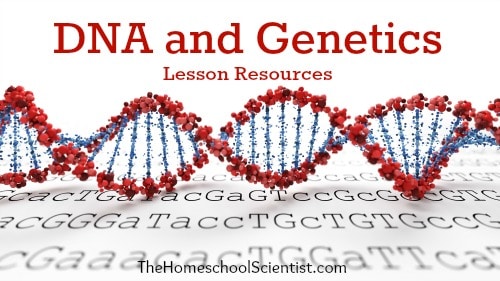
I hold a master’s degree in child development and early education and am working on a post-baccalaureate in biology. I spent 15 years working for a biotechnology company developing IT systems in DNA testing laboratories across the US. I taught K4 in a private school, homeschooled my children, and have taught on the mission field in southern Asia. For 4 years, I served on our state’s FIRST Lego League tournament Board and served as the Judging Director. I own thehomeschoolscientist and also write a regular science column for Homeschooling Today Magazine. You’ll also find my writings on the CTCMath blog. Through this site, I have authored over 50 math and science resources.



